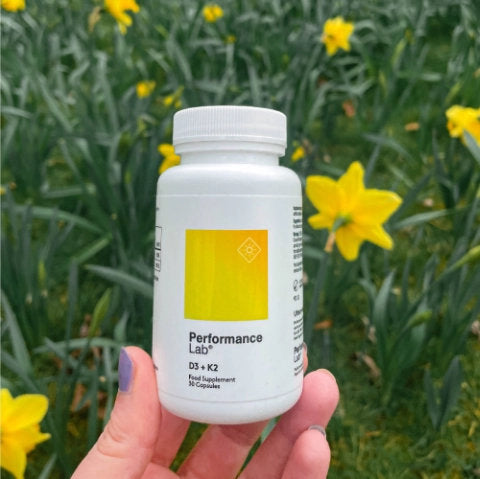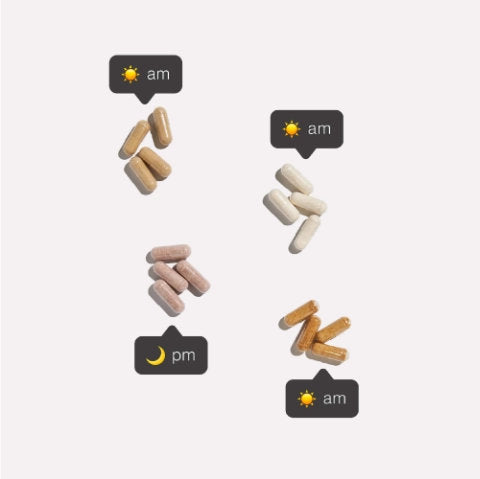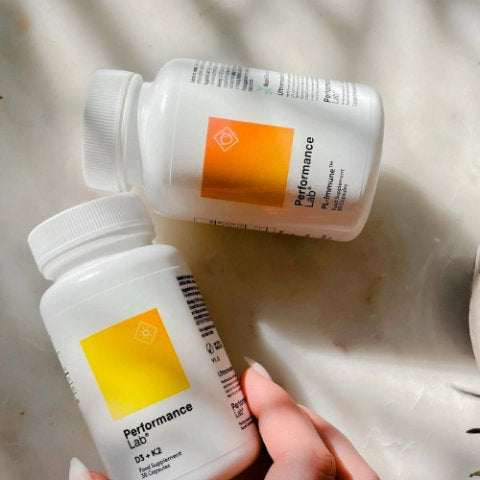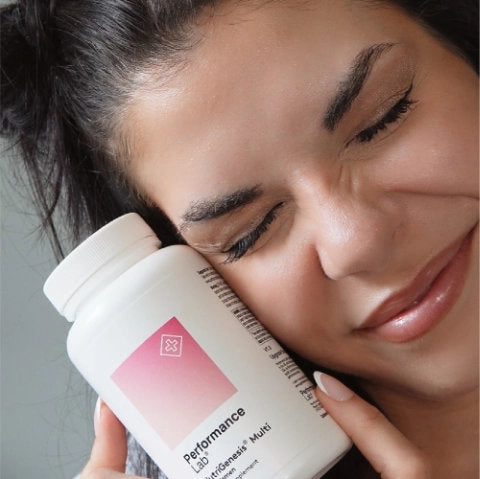Whether it’s arthritis pain or discomfort from an intense training session, we’ve all experienced those days when our body feels creakier and stiffer than the tin man.
And while there are loads of other alternative methods to use for pain relief, natural supplements are generally a staple in most athletes’ stacks.
One of those supplements is Boswellia Serrata. Ayurvedic medicine, along with many natural health practitioners, have used the gum resin of the Boswellia tree for centuries because of its powerful anti-inflammatory properties that appear beneficial for treating inflammatory-based diseases.
With that said, if you aren’t familiar with this herb, we’re breaking down what you need to know about boswellia serrata and why it should be included in your supplement stack.
What Is Boswellia Serrata?
Boswellia Serrata, also sometimes referred to as Indian frankincense, is a large tree native to the dry mountainous regions of India, Northern Africa, and the Middle East 1. Although there are over 600 species of boswellia trees, boswellia serrata is the most commonly used.
It’s one of the most ancient and highly valued herbs in Ayurvedic medicine that’s been used for ages in the treatment of several diseases, including diarrhea, ringworm, boils, fevers, skin and blood diseases, cardiovascular diseases, inflammation, Crohn’s, colitis, arthritis, and more.
But what is it about this herb that makes is such a powerful natural medicine? It’s been shown to exhibit several powerful properties, some of which include 1:
- Antiarthritic
- Anti-inflammatory
- Antihyperlipidemic
- Antiatherosclerotic
- Analgesic
- Hepatoprotective
When used as a medicine, these actions work together on several systems in the body to elicit highly powerful health-promoting effects.
How It Works
The actions of Boswellia are primarily attributed to the presence of boswellic acids—pentacyclic triterpenes that can exist in both the alpha or beta configuration, although research suggests the beta-configuration derivatives exhibit much more powerful bioactivities.
The gum resin of Boswellia Serrata contains similar amounts of 11-keto-B-boswellic acid (KBA) and acetyl-11-keto-B-boswellic acid (AKBA), with approximately 3-4.7% and 2.2-2.9%, respectively 2.
These boswellic acids have been proposed as selective 5-lipoxyegnase (5-LO) inhibitors 2; 5-LO is a pro-inflammatory enzyme that produces inflammatory leukotrienes that promote inflammation by causing free radical damage, calcium dislocation, cell-adhesion, and migration of inflammation-producing cells to inflamed areas of the body 1.
As such, Boswellia acts as a potent natural anti-inflammatory that can be used to treat various inflammatory-based diseases.
The Uses Of Boswellia
While Boswellia has been used for centuries to treat inflammatory-based diseases, more recent scientific research on Boswellia unveils the use of its resin and extracts in several other health conditions.
1. Arthritis
Rheumatoid arthritis is a common autoimmune condition that’s associated with inflammation of the joints leading to pain and stiffness.
For most people, the route of treatment usually involves taking non-steroidal anti-inflammatory (NSAID) medications targeted at relieving inflammation and reducing symptoms. However, Boswellia Serrata has shown promise for the treatment of RA due to its powerful anti-inflammatory properties.
Studies show that extracts of boswellia serrata can inhibit pro-inflammatory cytokines associated with RA. It's been shown to suppress interleukin-1 β (IL-1 β), tumor necrosis factor-α (TNF-α), interferon-γ (IFN-γ), as well as enhance the production of IL-10 in collagen-induced arthritic rats 3.
Together, these cytokines play a key role in developing chronic inflammation and tissue damage during the progression of RA. But BSE supplementation also showed a marked reduction in cartilage disruption, fibroosseous proliferation, pannus formation, vascular proliferation, synovial hyperplasia, vasculitis, and fibrinoid necrosis, all of which are hallmarks of rheumatoid arthritis.
On the other hand, some research has shown Boswellia to be an effective treatment for relieving pain associated with osteoarthritis. Two studies indicated that 90 days of treatment with 100 mg of enriched Boswellia serrata extract improved symptoms of OA compared to the placebo 4.
The mean pain score among participants using the placebo was 40 on a 0-to-100-point VAS scale (0 is no pain), whereas treatment with the Boswellia extract reduced the mean pain by 17 points. Studies also indicated that the use of Boswellia improved physical function compared to the placebo.
2. Asthma
Asthma is a condition where inflammation of the inner lining of the airways causes them to swell and produce mucous, which interferes with the ability to breathe.
The inflammation makes the airways more sensitive to certain asthma triggers like dirt and dust, which ultimately results in an asthma attack. Conventional treatment of asthma revolves around reducing inflammation via NSAIDs, corticosteroids, and other OTC meds that suppress inflammation.
However, studies suggest Boswellia may be a natural alternative to OTC drugs that may be just as effective for relieving asthma. It may suppress levels of leukotrienes, which cause bronchial muscles to contract and interfere with breathing.
A 1998 study of the herb’s effect on bronchial asthma found that of the patients taking Boswellia, 70% showed improvement of disease as shown by disappearance of physical symptoms and signs like dyspnoea, rhonchi, and a number of attacks 5.
Additionally, the pathophysiology of asthma is mediated by Th2 cells that produce Th2 cytokines like interleukin-4 (IL-4), IL-5, and IL-13; these cytokines trigger a cascade that recruits inflammatory cells into the lungs, causing airway epithelial wall shedding, airway inflammation, increased mucus production, and airway hyperresponsiveness 6. As such, inhibiting Th2 effector cytokines would essentially work to treat the condition.
But that’s not it. Research continues to show that Boswellia may exhibit other positive immune-balancing properties that can help the overreaction to environmental allergens that happens in people with asthma.
3. Inflammatory Bowel Disease
Because of its powerful anti-inflammatory effects, clinical trials have shown Boswellia to be beneficial for the treatment of IBD (Crohn’s and colitis).
Research shows that Boswellia’s ability to modulate inflammatory mediators may be the proposed mechanism of action for IBD. This includes 2:
- Cytokines: Boswellia extract interferes with the production of certain cytokines that play a critical role in the onset of inflammation, namely IL-1B, TNF-a, which are both targets for therapeutic antibodies used in the treatment of inflammatory diseases.
- 5-LO: Boswellic acids inhibit leukotriene biosynthesis by suppressing the activity of 5-lipoxygenase (5-LO).
While there is evidence to support the use of Boswellia for IBD, the results are somewhat inconsistent. A 2007 study of 31 participants with collagenous colitis—a form of inflammatory bowel disease that causes chronic diarrhea—found the supplementing with Boswellia extract three times daily for six weeks was slightly more effective than a placebo for clinical remission, lab testing, or quality of life 7; results showed that the proportion of patients in clinical remission was higher in the group taking BSE than in the placebo group.
4. Cancer
Although cancer is a complex disease and treatment is generally multi-faceted, some research suggests that boswellic acids may act in a number of ways to inhibit cancer growth. They have been shown to prevent certain enzymes from negatively affecting DNA that can lead to abnormal cell growth.
Research shows that the cytotoxic and antitumor effects of Boswellia Serrata are mainly attributed to induction of apoptosis through caspase activation, increased Bax expression, NF-κB down-regulation, and induction of poly (ADP)-ribose polymerase (PARP) cleavage 8, making it a potential candidate for cancer treatment.
Safety And Dosage
For the most part, herbs offer much higher safety and tolerability than OTC prescriptions, along with minimal side effects. Several studies show no serious, long-term, or irreversible adverse effects with boswellia supplementation 2.
However, mild side effects have been noted, most commonly gastrointestinal symptoms like diarrhea, abdominal pain, and nausea, but they are generally well tolerated 9.
Studies show that Boswellia extracts may interact with certain medications, specifically NSAID drugs like ibuprofen and drugs that are substrates of P-Glycoprotein (P-Gp), so it’s always best to speak with your healthcare provider before using 10.
As for dosage, there is no “standard” dosage; the use of treatment will dictate the dosage. However, general dosing guidelines suggest supplementing 300–500mg orally two to three times a day, although dosages may need to be increased for cases of IBD.
The Arthritis Foundation also suggests that supplementation should consist of 300–400 mg three times per day of a product training at least 60% boswellic acids.
Other research on the effects of boswellic acids on arthritis proposes an effective dose of 45, 90, and 180 mg/kg three times per day, with the higher dose eliciting the most profound effects 3.
Final Thoughts
Boswellia is a multifaceted herb that’s been used for centuries in the treatment of several chronic diseases, and it’s only recently that we’re catching on to all it has to offer.
Whether it’s reducing inflammation or providing pain relief for athletes trying to accelerate recovery, or improving GI function to relieve IBD, Boswellia holds a lot of potential for use as a powerful and all-natural medicinal agent.
References
- MZ Boswellia serrata, a potential antiinflammatory agent: an overview.Indian J Pharm Sci. 2011;73(3):255-261.
- M Abdel-Tawab, O Werz, M Schubert-Zsilavecz. Boswellia serrata: an overall assessment of in vitro, preclinical, pharmacokinetic and clinical data.Clin Pharmacokinet. 2011;50(6):349-369.
- R Kumar, S Singh, AK Saksena, R Pal, R Jaiswal, R Kumar. Effect of Boswellia Serrata Extract on Acute Inflammatory Parameters and Tumor Necrosis Factor-α in Complete Freund’s Adjuvant-Induced Animal Model of Rheumatoid Arthritis.Int J Appl Basic Med Res. 2019;9(2):100-106.
- M Cameron, S Chrubasik. Oral herbal therapies for treating osteoarthritis.Cochrane Database Syst Rev. 2014;2014(5):CD002947.
- I Gupta, V Gupta, A Parihar, et al. Effects of Boswellia serrata gum resin in patients with bronchial asthma: results of a double-blind, placebo-controlled, 6-week clinical study.Eur J Med Res. 1998;3(11):511-514.
- Z Liu, X Liu, L Sang, H Liu, Q Xu, Z Liu. Boswellic acid attenuates asthma phenotypes by downregulation of GATA3 via pSTAT6 inhibition in a murine model of asthma. Int J Clin Exp Pathol. 2015;8(1):236-243.
- A Madisch, S Miehlke, O Eichele, et al. Boswellia serrata extract for the treatment of collagenous colitis. A double-blind, randomized, placebo-controlled, multicenter trial.Int J Colorectal Dis. 2007;22(12):1445-1451.
- MA Khan, R Ali, R Parveen, AK Najmi, S Ahmad. Pharmacological evidences for cytotoxic and antitumor properties of Boswellic acids from Boswellia serrata.J Ethnopharmacol. 2016;191:315-323.
- HP Boswellic Acids and Their Role in Chronic Inflammatory Diseases.Adv Exp Med Biol. 2016;928:291-327.
- KK soni, T Lawal, S Wicks, U Patel, GB Mahady. Boswellia serrata and Ocimum sanctum extracts reduce inflammation in an ova-induced asthma model of BALB/c mice. Planta Med. 2015;81-PB4.












